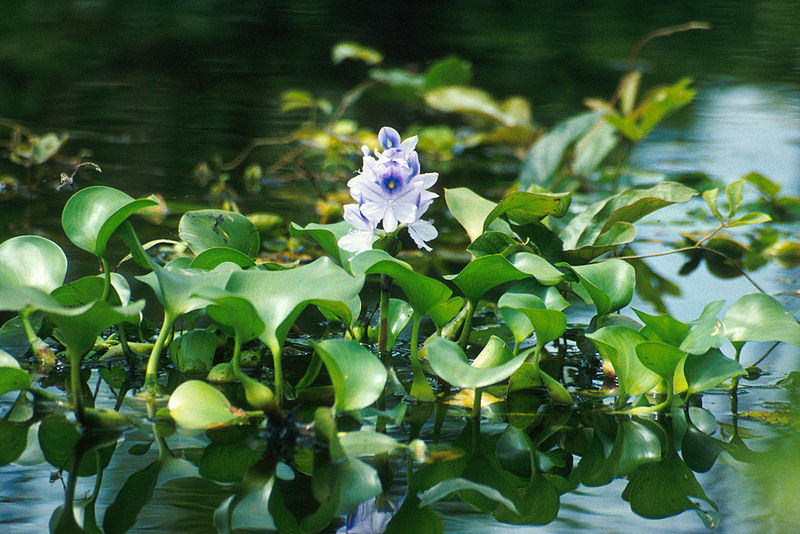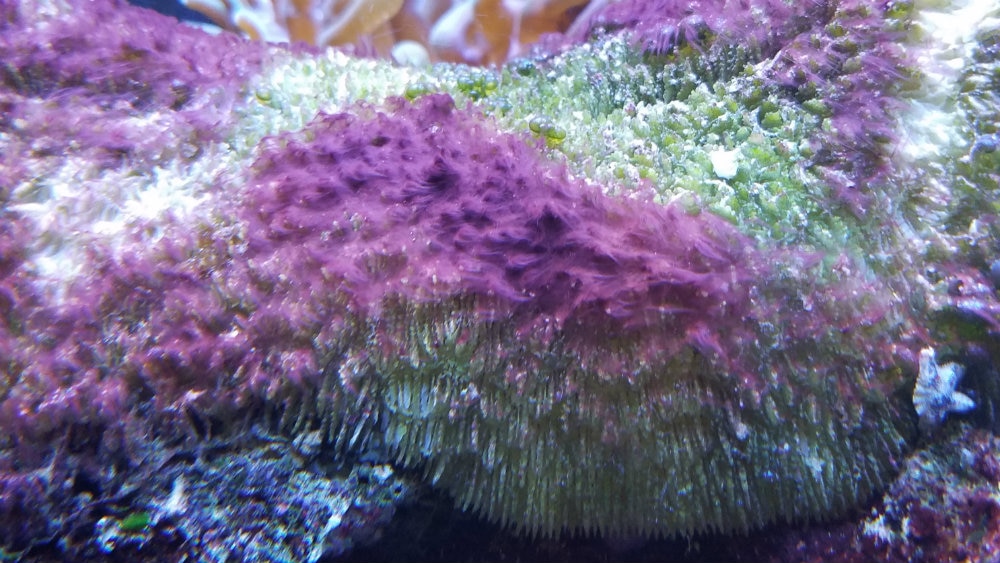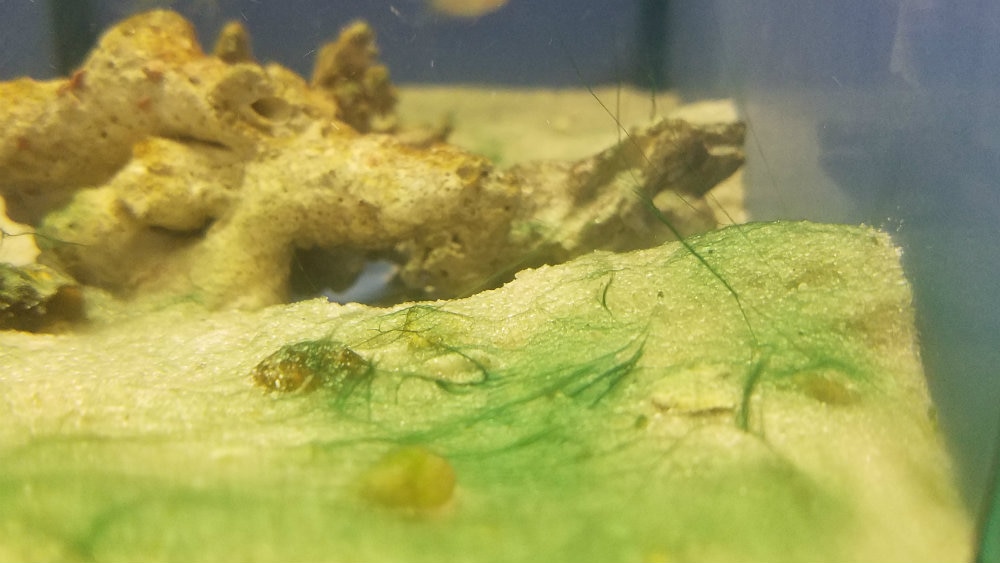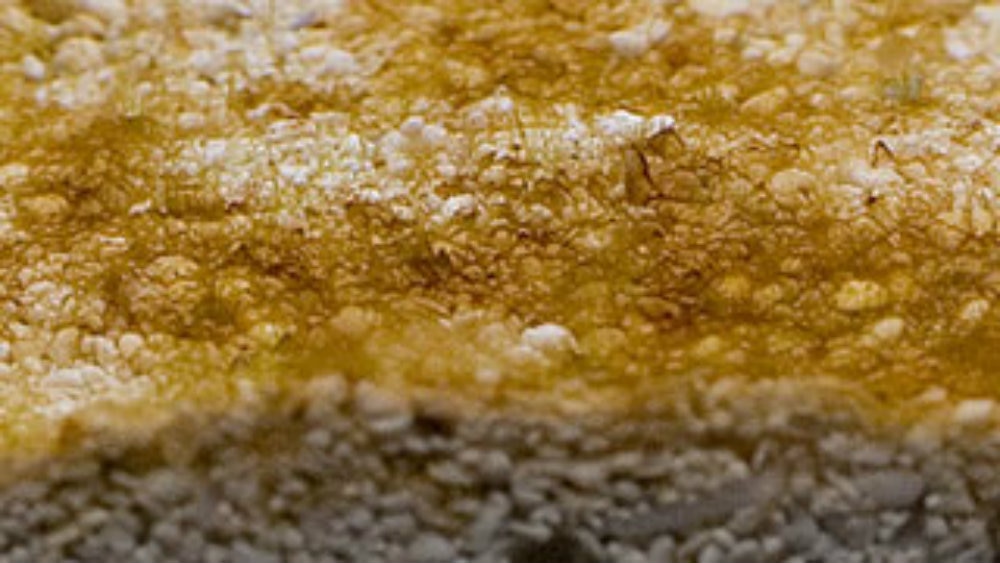Hello, Frank Indiviglio here. Please see Part I of this article for information on using plants and bacteria to control algae. Today I’d like to take a look at some algae-eating fishes, snails and shrimps.
Sucker Catfishes (Plecostomus, Hypostomus, Loricarichthys spp.)
An incredible array of fishes consume algae, with these interesting beauties being among the best known. Larger sucker cats and Chinese sailfin sharks (see article below) can also be kept in outdoor ponds.
Thailand Flying Fox, Epalzeorhynchus kallopterus
This nicely marked fish consumes all types of algae, and is also fond of the flatworms that sometimes arrive in aquariums along with live plants.
Siamese Algae Eater, Crossocheilus siamensis
This fish is similar in appearance to other, less-effective species, and is sometimes sold as the “True Siamese Algae Eater”. It does well in schools, and consumes even the coarser varieties of hair and beard algae.
 Chinese Hillstream Loach, Beaufortia kweichowensis
Chinese Hillstream Loach, Beaufortia kweichowensis
This small loach is one of my favorites. It has been compared to a flounder in appearance, but reminds me of the oddly-shaped torpedo rays.
This active loach is adapted to fast-flowing waters, and fares best in high oxygen environments. It is well-suited for removing algae from glass and plant leaves, and is rarely if ever bred in captivity…definitely a fish worth working with for those interested in breaking new ground.
Garra pingi pingi or Pingi Log Sucker, Discognathus pingi
Formerly rare in the trade, this stout East Asian bottom dweller has a huge appetite for algae of all types. Many aquarists find they must supplement its diet with algae wafers; those I have kept took pre-soaked kale as well.
This is another species which would make a nice breeding project, as only wild-caught animals are available at this point.
Algae Eater, Gyrinocheilus aymonieri
The “standard” algae control fish in smaller aquariums, the taxonomy of this interesting species is somewhat of a mystery. While typically reaching 4 inches in length, I recall receiving shipments of individuals that topped 11 inches. I hope to keep some in an outdoor pond in the future, to see if the increased water volume might spur additional growth.
Algae eaters relentlessly comb rocks, glass and plant leaves for algae, and will take leftover fish flakes as well.
Freshwater Shrimp
Almost all of the dozen or so species currently available favor algae as food. Particularly attractive is the cherry shrimp, Neocaridina denticulata sinensis. Given proper care (please see article below) they will breed prolifically, with a large group making for a spectacular display.
Freshwater shrimp will co-exist with the fish mentioned above, but will, however, be harassed or eaten by fishes with carnivorous tendencies.
Snails
A number of snails live almost entirely upon algae, but many consume plants as well. Apple snails can eat a surprising number of plants overnight, while olive Nerites (please see article below) take only algae and do not reproduce in fresh water. The Japanese trapdoor snail is also a good choice, but needs warm, well-filtered water.
Further Reading
To learn more about some of the creatures mentioned above, please see the following articles:
Freshwater Shrimp
Please write in with your questions and comments. Thanks, until next time, Frank Indiviglio.
 That Fish Blog – Aquarium Advice and Information
That Fish Blog – Aquarium Advice and Information

 Aquatic plants are very effective in capturing the nutrients needed by algae and limiting their growth. However, many do not reproduce vigorously, so plantings should be as dense as possible. In some situations,
Aquatic plants are very effective in capturing the nutrients needed by algae and limiting their growth. However, many do not reproduce vigorously, so plantings should be as dense as possible. In some situations, 


